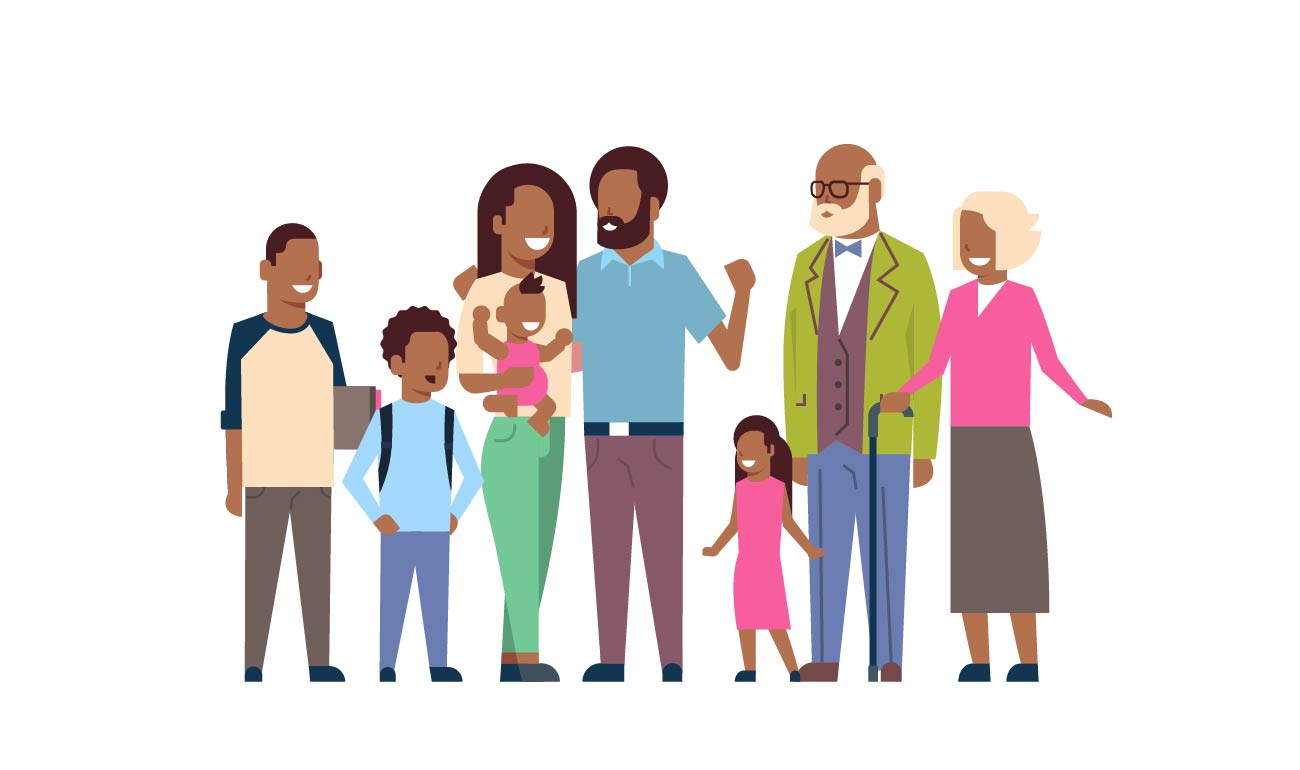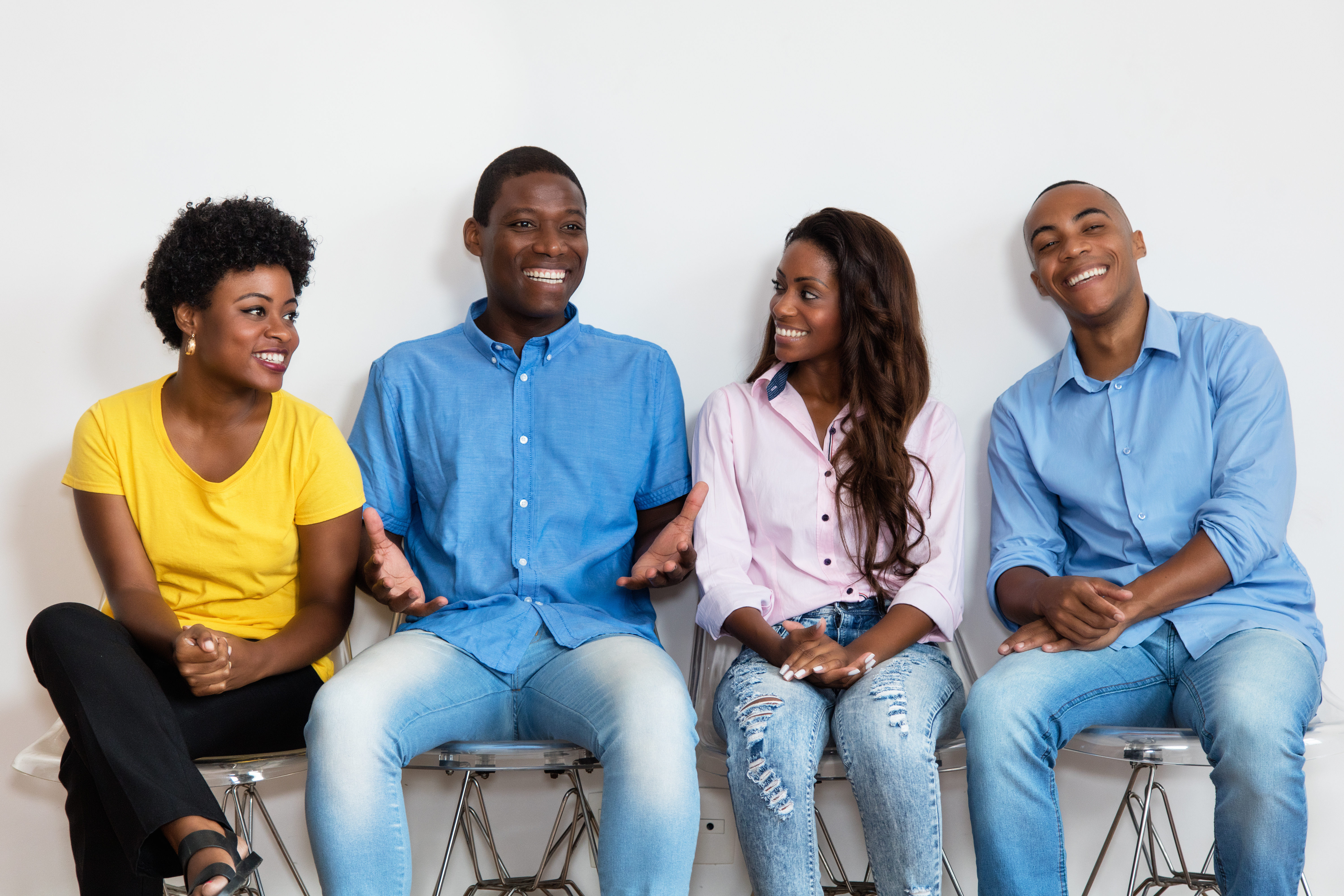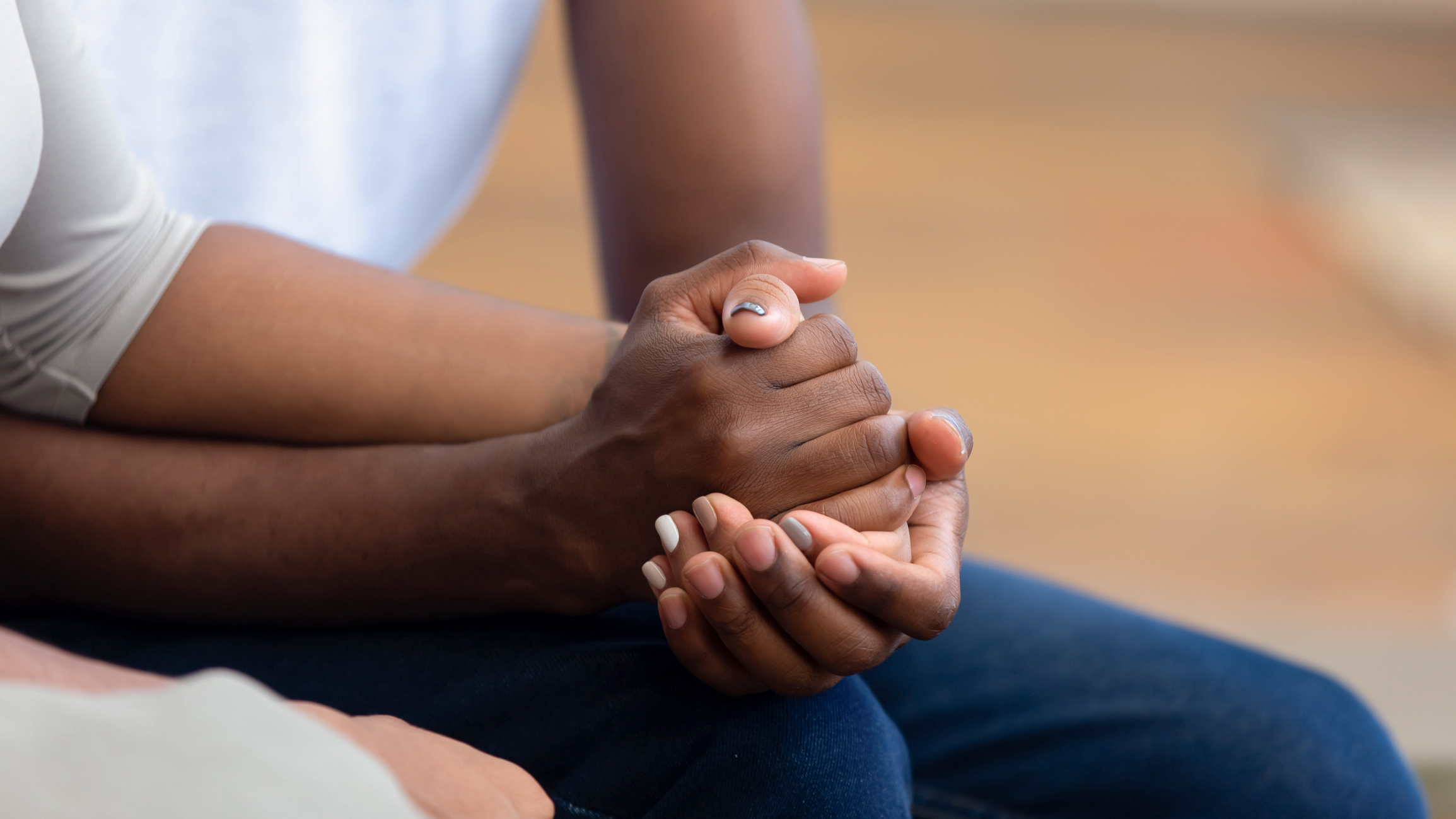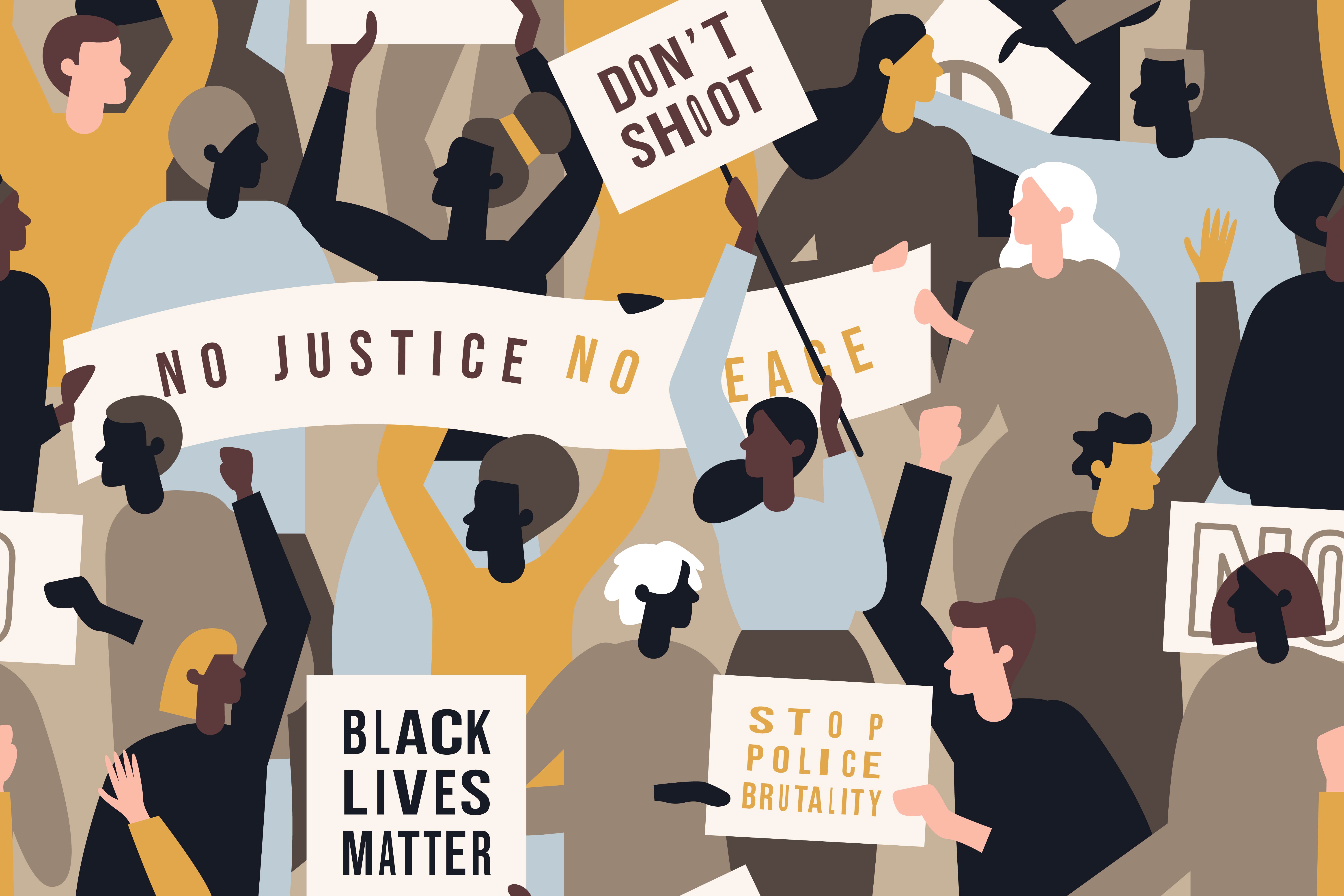
Consumer Connections Series: Amplifying the Voice of the Black Consumer Part 2 – Generational POVs – Key Takeaways
Filed Under: Black / African American, Generations
Ashleigh Williams
Senior Director, In-Person Qualitative Research
To download the summary report, fill out the form below.
It seems like yesterday that we were talking about the new social unrest and outrage around the murder of George Floyd. Since then new deaths have occurred, and racial tensions continue to be at the forefront of our minds. Without room for doubt, the deep-rooted history of racial divisions in the U.S. have contributed to getting us to where we find ourselves today. As the conversation gets louder and activism to drive change continues, members within the Black community voice their concerns, approaches, and proposed solutions.
These discussions are ubiquitous and take place at protests, dinner tables, on social media and Zoom chats. Past research has taught us that the way in which generations view cultural topics is shaped by the environments and realities of their respective eras. On August 20th, 2020, we hosted a roundtable discussion with Black consumers of different generational backgrounds. We sought to understand how generations differ in their mindsets and how these perspectives shape their views on a path forward, including how companies/brands play a role in this movement towards change. Please note that when we refer to Black Lives Matter, we are referring to the social movement and not the specific foundation/organization. What we found is that there’s a tension between younger and older Black consumers in terms of how they see racial relations today – with older consumers appreciative of how far we’ve come and younger consumers not happy with the status quo.
Here are takeaways:
Young Millennials and Gen Z are up to challenging the status quo in all areas of their lives. Specifically, younger generations are keen on instant gratification while older Black people seek advancement over time.  Millennials straddle the old technology of yesteryear with the technological advancements we enjoy today, which gives them the ability to see and understand the history but also to imagine how to innovate to make it better. The boom of the new technological era contributes to their sense of creativity and inspires them to think of ways to be more efficient when considering how they can right the wrongs of past generations (such as racial disparities in all areas of American life). They bring a sense of energy to these issues of discrimination and racial injustices that remain unsolved today. No matter whether it’s in their work or home lives, they learn the perceived rules or cultural norms that are expected (including racial disparity in these environments), but they challenge these rules and norms and feel a need to break them. They are especially aware of the sense of code switching and racial hierarchy taught to them by their elders. They are willing to step out of these constraints and demand a freedom to be themselves, unapologetically. Millennials and Gen Zers are passionate about the need for change now. Within the context of the recent developments in 2020, and specifically the death of George Floyd, they pay attention to who and how a brand or company responds. They are willing to buy into the recent “cancel culture” if a brand remains silent or doesn’t provide clear and concise plans for action. Conversely, older generations are more open to seeing progress take place over time. To them, a bit of progress forward is still a step in the right direction. A long-term strategy or approach is a way to their hearts. Older generations are more interested in a deeper more meaningful relationship with brands and companies that have a long-standing relationship with the community. “I feel like sometimes there’s a disconnect because Millennials know what they want. They’re creating the conversations to get the laws changed and to get the things out there. And I just think that sometimes it kind of goes too fast for the older generation.” “And then to reference that we’re trying to get the laws changed, we’re really just trying to get the paradigm to shift. We’re just trying to get people to be more open to things. And yes, you’re right that the older generations are probably a bit slower to accept some of these things, but that’s because the terminology is changing so quickly, not because the ideas have changed. I think that a lot of these things that we’re discussing have been around for a long time. What trips a lot of people up is getting to that point of acceptance because they’re like, ‘Well, I want to understand. I’m just not understanding it at the pace that seems to have been set’.” [About brands supporting BLM] “So Nike made this shoe so they could donate the money. I think that this is a step in the right direction, but I also feel like, ‘What took so long?’ We’ve been wanting these sort of changes for a long time and nobody took it seriously until recently, which I guess it’s never too late, but it just seemed to have taken a long period of time to have the Amazons, the Nikes properly communicate somewhat with the Black community.”
Millennials straddle the old technology of yesteryear with the technological advancements we enjoy today, which gives them the ability to see and understand the history but also to imagine how to innovate to make it better. The boom of the new technological era contributes to their sense of creativity and inspires them to think of ways to be more efficient when considering how they can right the wrongs of past generations (such as racial disparities in all areas of American life). They bring a sense of energy to these issues of discrimination and racial injustices that remain unsolved today. No matter whether it’s in their work or home lives, they learn the perceived rules or cultural norms that are expected (including racial disparity in these environments), but they challenge these rules and norms and feel a need to break them. They are especially aware of the sense of code switching and racial hierarchy taught to them by their elders. They are willing to step out of these constraints and demand a freedom to be themselves, unapologetically. Millennials and Gen Zers are passionate about the need for change now. Within the context of the recent developments in 2020, and specifically the death of George Floyd, they pay attention to who and how a brand or company responds. They are willing to buy into the recent “cancel culture” if a brand remains silent or doesn’t provide clear and concise plans for action. Conversely, older generations are more open to seeing progress take place over time. To them, a bit of progress forward is still a step in the right direction. A long-term strategy or approach is a way to their hearts. Older generations are more interested in a deeper more meaningful relationship with brands and companies that have a long-standing relationship with the community. “I feel like sometimes there’s a disconnect because Millennials know what they want. They’re creating the conversations to get the laws changed and to get the things out there. And I just think that sometimes it kind of goes too fast for the older generation.” “And then to reference that we’re trying to get the laws changed, we’re really just trying to get the paradigm to shift. We’re just trying to get people to be more open to things. And yes, you’re right that the older generations are probably a bit slower to accept some of these things, but that’s because the terminology is changing so quickly, not because the ideas have changed. I think that a lot of these things that we’re discussing have been around for a long time. What trips a lot of people up is getting to that point of acceptance because they’re like, ‘Well, I want to understand. I’m just not understanding it at the pace that seems to have been set’.” [About brands supporting BLM] “So Nike made this shoe so they could donate the money. I think that this is a step in the right direction, but I also feel like, ‘What took so long?’ We’ve been wanting these sort of changes for a long time and nobody took it seriously until recently, which I guess it’s never too late, but it just seemed to have taken a long period of time to have the Amazons, the Nikes properly communicate somewhat with the Black community.”
Older generations desire more respect and gratefulness for how far they feel they’ve already advanced the cause.  Black Gen Xers and Boomers reflect on how far equality has progressed over time. Specifically, they express appreciation for resources that younger generations now have at their fingertips such as the internet and cell phones that open the possibilities for educational advancement and progress toward equality. In some cases, they sense a feeling of entitlement from younger Black people and want the younger generation to appreciate and celebrate the progress that has already been made. Older generations feel they have paved the way for the Black Lives Matter Movement as far back as the Civil Rights era; and they believe that while the youth are driving change today, they need a way to better focus their energy. They suggest an openness to mentorship and a richer dialogue between older and younger generations to spearhead strategies to drive change. “A lot of the things that we have today, we got gradually, but you guys [Millennials] have it all at once. So you have access to the internet. We didn’t have access to the internet growing up. We didn’t know if we could go to school or not. We were being told we’d be lucky if we could get a student loan and go to school, whereas it’s accepted information and as fact now.” “Now, the millennials, which I’m very proud of because you guys are so open, so honest, so free, you guys are very intelligent, but my concern is that we grow with mentors, being mentors, being mentees. I’d like to see you guys allow us to mentor and share stories with you so you don’t have to experience some of the things that we went through, even though you’re technically more savvy than we are and you’re more free than we are, but just still pulling each other for that knowledge to go from generation to generation and not lose that touch because that’s what brought us where we are today.” “Even though I was very, very young during the Civil Rights Movement, I think we were considered radical. I think we were considered rather pioneering. I think that there is a respect, at least from the group of people I’ve met in that age range [Millennial], who respect what we laid out for them, to a certain extent.”
Black Gen Xers and Boomers reflect on how far equality has progressed over time. Specifically, they express appreciation for resources that younger generations now have at their fingertips such as the internet and cell phones that open the possibilities for educational advancement and progress toward equality. In some cases, they sense a feeling of entitlement from younger Black people and want the younger generation to appreciate and celebrate the progress that has already been made. Older generations feel they have paved the way for the Black Lives Matter Movement as far back as the Civil Rights era; and they believe that while the youth are driving change today, they need a way to better focus their energy. They suggest an openness to mentorship and a richer dialogue between older and younger generations to spearhead strategies to drive change. “A lot of the things that we have today, we got gradually, but you guys [Millennials] have it all at once. So you have access to the internet. We didn’t have access to the internet growing up. We didn’t know if we could go to school or not. We were being told we’d be lucky if we could get a student loan and go to school, whereas it’s accepted information and as fact now.” “Now, the millennials, which I’m very proud of because you guys are so open, so honest, so free, you guys are very intelligent, but my concern is that we grow with mentors, being mentors, being mentees. I’d like to see you guys allow us to mentor and share stories with you so you don’t have to experience some of the things that we went through, even though you’re technically more savvy than we are and you’re more free than we are, but just still pulling each other for that knowledge to go from generation to generation and not lose that touch because that’s what brought us where we are today.” “Even though I was very, very young during the Civil Rights Movement, I think we were considered radical. I think we were considered rather pioneering. I think that there is a respect, at least from the group of people I’ve met in that age range [Millennial], who respect what we laid out for them, to a certain extent.”
Regardless of age, Black people hold similar values and goals. However, their strategies on how to get there differ greatly. Throughout the panel discussion, all generations expressed the goal of achieving equality and financial prosperity for the Black community. However, while older generations would like to foster this change with a more traditional, slow-and-steady approach, the younger generations seek a multifunctional approach. Financial independence is just one example of how their strategies differ. Case in point: While older generations tend to seek a more traditional approach of remaining loyal to one career path and saving into one retirement fund, younger generations seek to diversify their portfolio and obtain wealth from a variety of sources rather than focusing on seeking a stable stream of income. This leaves a breakdown in communication in which older generations believe youth don’t value financial freedom, and younger generations feel that older generations are stuck in their ways, “putting all their eggs in one basket.” “To the millennials, do you guys think about home ownership and retirement plans or just investing? I mean, for us, having a home, having something to fall back on, having that 401K, which by the time you guys get our age, won’t be there, anyway. But what are you guys talking about as far as finances?” “Currently, I hold four or five different titles. So it’s not about staying in one place for too long. It’s more about moving the entire culture forward. So we’re not really focused on 401Ks, I would say, but we are focused on building a foundation to fall back on. So I invest, personally. I don’t care that a company is matching 3% or 4% of my contributions because I’m doing that on my own. I’m looking into investments and things of that sort for real estate and properties. I think that a lot of people in my generation are looking for the future, but a lot of those old infrastructures are falling away. As you said, those retirement plans, those 401Ks, they may not hold up. So we’re looking for new ways to sustain ourselves now and going forward.”
For younger generations, terms and identity matter and can help push the conversation for change. Older generations focus less on terms and more on the momentum needed to push progress forward.  Terms such as BIPOC (Black, Indigenous, & People of Color) are championed as a way to provide context and unity to those who may not have a voice in this movement. For Millennials and Gen Zers it is particularly important to call out cultural identity and use cultural terms associated with cultural activism to identify, properly discuss, and figure out ways to end social injustice. To Boomers and Gen Xers, technical terms are less important. Actions speak louder than words. “It actually did come from the community. It focuses on the more marginalized groups within people of color. Native Americans are indigenous to America but forced onto reservations. They hardly get to speak for themselves. BIPOC even refers to indigenous Mexicans who are darker than other Mexicans. It makes it easier if we’re talking amongst ourselves or typing it out. It takes less time. It’s going to take all day if you want to roll call all the people of color.” “The way he described that makes sense. But I couldn’t imagine hearing that out of someone’s mouth. It’s so new that you have to use as many words as he did, you might as well address who you need to address.” “It sounds appropriate if you’re using it for some purpose. But in casual conversation I wouldn’t use that. I still think native Indians would have trouble following that. I don’t know if they’d agree with that.”
Terms such as BIPOC (Black, Indigenous, & People of Color) are championed as a way to provide context and unity to those who may not have a voice in this movement. For Millennials and Gen Zers it is particularly important to call out cultural identity and use cultural terms associated with cultural activism to identify, properly discuss, and figure out ways to end social injustice. To Boomers and Gen Xers, technical terms are less important. Actions speak louder than words. “It actually did come from the community. It focuses on the more marginalized groups within people of color. Native Americans are indigenous to America but forced onto reservations. They hardly get to speak for themselves. BIPOC even refers to indigenous Mexicans who are darker than other Mexicans. It makes it easier if we’re talking amongst ourselves or typing it out. It takes less time. It’s going to take all day if you want to roll call all the people of color.” “The way he described that makes sense. But I couldn’t imagine hearing that out of someone’s mouth. It’s so new that you have to use as many words as he did, you might as well address who you need to address.” “It sounds appropriate if you’re using it for some purpose. But in casual conversation I wouldn’t use that. I still think native Indians would have trouble following that. I don’t know if they’d agree with that.”
Those from older generations are able to compartmentalize Black issues and the corresponding solutions within the broader conversation of cultural equality within the U.S. Younger generations have a more holistic approach and feel it’s important that no one is left behind, and that includes the LGBTQ+ community. Boomers and Gen Xers see the plight of Black people as a separate social injustice from other social rights issues. While they have dedicated much of their efforts to eliminating racial inequality, some are less further along in how LGBTQ+ rights relate to this progress. Some feel more comfortable taking a “mind their own business” approach in which they don’t cast judgement but don’t feel they can take on LGBTQ+ social injustice as their own personal crusade. Younger generations adhere to what Martin Luther King Jr. meant when he said, “Injustice anywhere is a threat to justice everywhere.” They see LGBTQ+ rights in direct correlation to racial injustice. Therefore, they believe if they are for solutions to eradicate systemic racism, they must also be for solutions to eradicate homophobia or any other social injustices. They encourage older generations to realize that if social injustice can happen to these other groups, it can continue to happen to the Black community as a whole. “I know how to understand that whatever I see over there has nothing to do with me and be okay with that. I feel that sometimes the younger generation, because they are in the mix of changing some of the laws and changing some of the outlooks of how people interact with them and interact with others, they want an answer right now. ‘You either support me right now or that’s it.’ And I feel like the older generation, they have their thoughts and feelings about it, but I do feel like that 39 to 50, maybe even 55, we haven’t thought about it. We don’t care. It’s new to us, but we really don’t care. We’re perfectly capable of seeing it and not caring at the same time.” “I think that the example is applicable. It sounds like she’s referring to three different perspectives on the topic of the LGBTQ movement in America or beyond: One, the standpoint of minding my own business. Two, the standpoint of tolerance. And three, the standpoint of acceptance. So what we, in the younger generation, are trying to do is move away from minding my own business because we’re like, ’Okay, what’s happening over there has nothing to do with me,’ but in reality, it does because a lot of the struggles that oppressed communities, period, face are similar. I mean, you can talk about LGBTQ individuals, you can talk about Black individuals, you can talk about individuals of color that are not Black. We’re all facing marginalization. We’re all facing cultural imperialism. We’re all facing oppression in different ways. A very applicable quote from Dr. King is that ’A threat to justice anywhere is a threat to justice everywhere,’ period. So that, if you are minding your business, you’re not tolerating. And if you’re not tolerating, you’re not accepting.”
Regardless of the strategy or approach, Black consumers are leery of those who are seeking to take advantage of the movement currently for profit. With a movement that is currently four years in the making, they question the genuineness of companies and brands who have just joined the cause. While representation is considered progress, this has been a reckoning long in the making. Brands have received requests for more inclusive products to represent all skin tones. Band-Aid, for example, is taking this into account in the production of its products. Some brands are just catching on. However, brands such as Fenty who led with inclusivity as a guiding light at its conception are shining brighter than ever. However, it’s not too late to champion equality and inclusivity. What is important to these Black consumers is how the community is approached and made a part of the journey for change. “When I look at how the companies and brands are responding, they’re doing better. They’ve even got companies out there walking the protests for the Black Lives Matter Movement. Yeah, show your presence, but also show your dollar. Nike donated, I think, $40 million to the Black Lives Matter Movement, but they did that after they created a shoe for Colin Kaepernick that sold out in 24 hours. So you donated money, but then you got money from making him a new shoe. If our lives truly matter, you really want this to be equitable, you really want it to be fair, then you should be making sure within your company that you are giving us the same raises, making sure we’re all with the same amount of pay.”
So What? C+R’s Stance:
- Recognize Black people are not all the same. The Black Experience is different, and age is just one factor in how Black Americans shape their perspectives. It’s important to do further research within the Black community as a whole, and with these different cohorts, to understand these nuances and inform a strategy to fulfill their unique needs. It’s important to understand how these generational groups approach these topics, and therefore, how your brand should act in accordance.
- Most companies are playing catch-up, but regardless more needs to be done. Don’t exploit this vulnerable moment for financial gain, but make this more than a moment-in-time, and take genuine action to effect change. Regardless of age, the Black community questions companies that are just now taking a stance on racial injustice, asking, “Why now?” They are highly critical of anyone who now suddenly claims, “Black Lives Matter” but hasn’t done much to show support in the past. Therefore, they expect more than just words to back up a new declaration. Black people are hyper aware of brands and companies who use the Black Lives Matter Movement (not the organization/foundation) in a guise to sell product or gain a profit. It’s important that companies are not using a vulnerable moment for the community to increase their bottom line.
- Beware of the dreaded title “trying too hard.” Take some time to educate the organization and brand properly so you are genuine rather than just “PC.” With protests and developments happening at a rapid pace, the Black community and culture as a whole is evolving quicker than ever before. With new terms and platforms being brought into the forefront (such as BIPOC), using terms relevant even from a few years ago can be seen as tone deaf or even disingenuous. It’s important to keep an ear to the ground to understand in which direction the movement is headed and how brands and companies can be a part of it.
- Ensure products and services are meeting the unique needs of Black consumers.
 While Black consumers continue to champion Black-owned businesses to support the Black community, they are more focused on whether a company meets their needs or not. Black businesses are favored because they often fill the gap, offering products that resonate. Mainstream brands can win their share of wallet but must dig deeper into the lives and psyche of Black consumers to understand and address their unmet needs. “I’m grateful also for the other movement that’s going on parallel, which is the Black companies promoting Black products, selling to Black communities. That, to me, is way more important than a company going, ‘Yeah, Black lives matter.’ We know you feel that way, but ultimately, I want to see Black success within our own ranks. I want us to have our own wealth and to have products that are dedicated to Black people and are for Black people and to establish something. We sit here and we work these jobs, we work 40 hours a week, and all we’re doing is contributing to someone else’s wealth. What are we doing to build our own wealth? I think that it would be nice if they actually had products that targeted Black communities. They need to recognize that there’s a variety of needs and differences that go along with African Americans and what they look for in a product. You see it a little bit more right now because of the Black Lives Matter Movement, but they still have a long way to go in terms of generalizing products. Ulta is a perfect example. It’s a beauty product store, gentlemen. You walk in that store and you go to find makeup and all the makeup colors stop at Asian. And so then you can’t find your color there. And then, when you report them or you contact them, they go, ’Oh. Well, they just don’t sell as much.’ That’s a lie. Black women buy a ton of makeup. Okay? The only brand that I can think of that actually targets Black consumers is Gold Bond. And that’s because they built a lotion that has shea butter in it and cocoa butter and they have three Black women on the commercial going, ‘This is what I want in my lotion’.”
While Black consumers continue to champion Black-owned businesses to support the Black community, they are more focused on whether a company meets their needs or not. Black businesses are favored because they often fill the gap, offering products that resonate. Mainstream brands can win their share of wallet but must dig deeper into the lives and psyche of Black consumers to understand and address their unmet needs. “I’m grateful also for the other movement that’s going on parallel, which is the Black companies promoting Black products, selling to Black communities. That, to me, is way more important than a company going, ‘Yeah, Black lives matter.’ We know you feel that way, but ultimately, I want to see Black success within our own ranks. I want us to have our own wealth and to have products that are dedicated to Black people and are for Black people and to establish something. We sit here and we work these jobs, we work 40 hours a week, and all we’re doing is contributing to someone else’s wealth. What are we doing to build our own wealth? I think that it would be nice if they actually had products that targeted Black communities. They need to recognize that there’s a variety of needs and differences that go along with African Americans and what they look for in a product. You see it a little bit more right now because of the Black Lives Matter Movement, but they still have a long way to go in terms of generalizing products. Ulta is a perfect example. It’s a beauty product store, gentlemen. You walk in that store and you go to find makeup and all the makeup colors stop at Asian. And so then you can’t find your color there. And then, when you report them or you contact them, they go, ’Oh. Well, they just don’t sell as much.’ That’s a lie. Black women buy a ton of makeup. Okay? The only brand that I can think of that actually targets Black consumers is Gold Bond. And that’s because they built a lotion that has shea butter in it and cocoa butter and they have three Black women on the commercial going, ‘This is what I want in my lotion’.”
explore featured
Case studies

